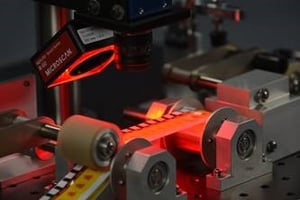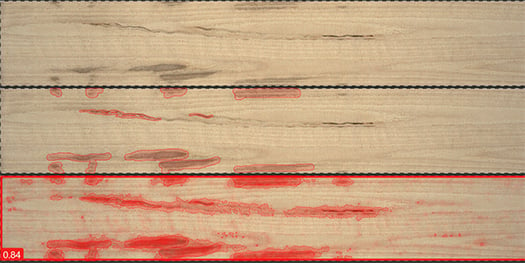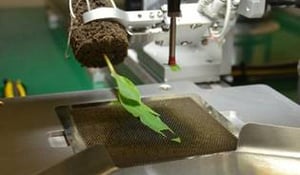When approaching the construction of a single product, it's easy to take the time to use the finest materials, measure carefully, align pieces, and make necessary adjustments to provide the best result. Carpenters choose their preferred wood, work with the grain, and avoid machine jolting knots. Medical instruments are painstakingly honed and tested to ensure a tool that will perform reliably when it really matters. Researchers spend countless hours gathering samples and categorizing them with an eye toward specific qualifications before they can begin their assessments. While these models have the highest levels of quality in lower quantities, human error is still a factor and the margin of accuracy decreases as demand for products and results take precedence.
 Technology available today allows us to take advantage of computer precision by incorporating image processing with static and adaptive decision making parameters. Called Machine Vision Neural Networks, they are a series of algorithms that endeavor to recognize underlying relationships in a set of data through a process that mimics the way the human brain operates. Neural networks can adapt to changing input; so the network generates the best possible result without needing to redesign the output criteria.
Technology available today allows us to take advantage of computer precision by incorporating image processing with static and adaptive decision making parameters. Called Machine Vision Neural Networks, they are a series of algorithms that endeavor to recognize underlying relationships in a set of data through a process that mimics the way the human brain operates. Neural networks can adapt to changing input; so the network generates the best possible result without needing to redesign the output criteria.
Machine Vision solutions today have two distinct branches – Traditional Machine Vision and Machine Learning (neural network or artificial intelligence) approach. Both branches have developed tremendously in recent years through advancement in both camera and computing technologies.
In a traditional Machine Vision approach, engineers will use a camera and lighting system to acquire an image that clearly identifies the desired features to be analyzed. Software based processing algorithms further enhance these features and image measurement tools classify or inspect the features accordingly. These systems can be implemented reliably, however, for some challenging applications, they may not perform as well as the human eye.

For those applications, Machine Learning may be more appropriate. In such a system, the algorithm is “trained” by feeding it pre-classified images of known good products and bad products with known flaws. The computer now has a guideline for classifying new images correctly. At this point, the limitations are only those of the software available. There are a number of machine learning tools available for image processing, with different levels of algorithm transparency and adjustable features.
David Chargin, Project Manager & Senior Automation Engineer for Fraunhofer USA Center for Manufacturing Innovation CMI, notes that in some applications, both techniques can be combined in a hybrid approach, with a traditional machine vision system pre-processing images to highlight relevant details before handing them over to a machine learning algorithm.
Past machine vision applications at Fraunhofer USA CMI include:
- Leaf sampling system – automatically determine the healthy portion of a plant leaf suitable for sampling, which was then cut with a laser.
- Medical device inspection – performing a complete 360° visual inspection of a 2.3 m long stainless steel wire braided shaft for defects as small as 50 µm. The system processed 3300 images in ~23 seconds (140 frames per second).
- High speed label inspection system – verified presence of product labels on continuously operating production line at 40 labels / second.
- High speed measurement system – inspected digitally printed film for precise printing to ±.001 in precision at 2 positions / second.
- Automated alignment system – robotically loaded wafers and aligned to exposure masks with 1 µm precision for the production of optoelectronic components.
- Wood Inspection - developed a system to inspect grain orientation and defects and sort according to quality standards
- Automated Packaging – located products coming on a conveyor in random orientations with a machine vision system and robotically loaded them into packages at a rate of 40 per minute.